News & Articles
Browse all content by date.
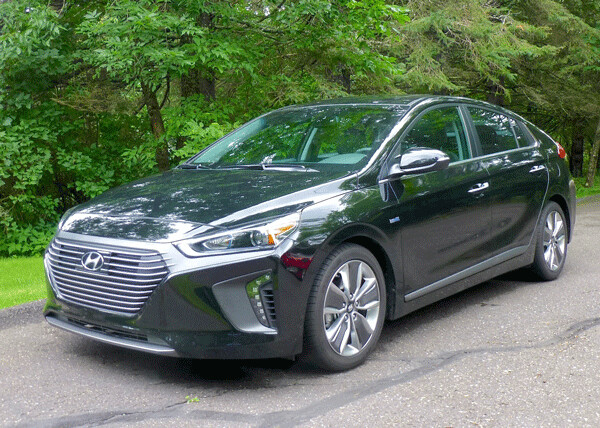
If there were no such thing as hybrid or electric cars, and buying a car meant nothing more than the size of vehicle we want and any of various degrees of efficient gasoline engines, you might select a Hyundai Ioniq as a stylish, attractively-styled car that somehow fits the spaciousness of a larger car into the low, sleek exterior of a compact.
Such a car might get 30 miles per gallon, because of the aerodynamics and the efficiency of contemporary gas engines. But, of course, we are well along into the era of hybrid cars, which combine gas engines and electric motors, as we roll merrily toward pure electric propulsion, and when I got the Ioniq out on an extended highway trip, its calculator displayed 52.1 miles per gallon for 400 miles.

The Ioniq is Hyundai’s well-conceived weapon of choice in the corporate warfare aimed at hybrid and electric superiority -- a realm that has been the almost-private domain of Toyota with its hugely popular Prius. I was impressed when I drove the various models at the Ioniq Midwestern introduction near Ann Arbor, Mich., and I am more impressed since a glossy “black noir” Ioniq Limited pulled up in my driveway just outside Duluth, Minn., for a week-long hands-on test.
Hyundai has spared nothing in working with fellow-South Korean electronics giant LG Chem to come up with what we might refer to as a “better mousetrap.” Only the Ioniq is not attempting to trap mice; it would settle for bypassing something known as Prius.
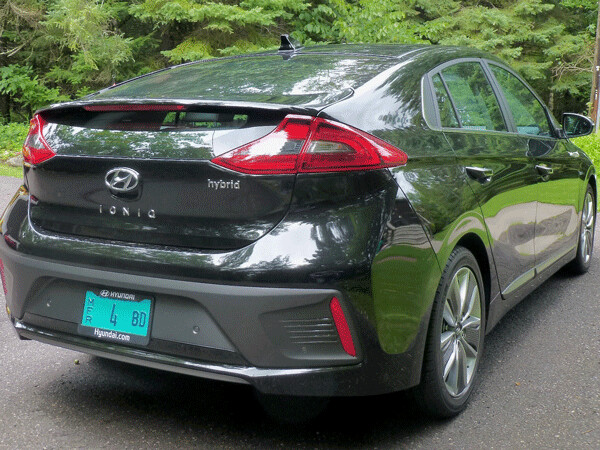
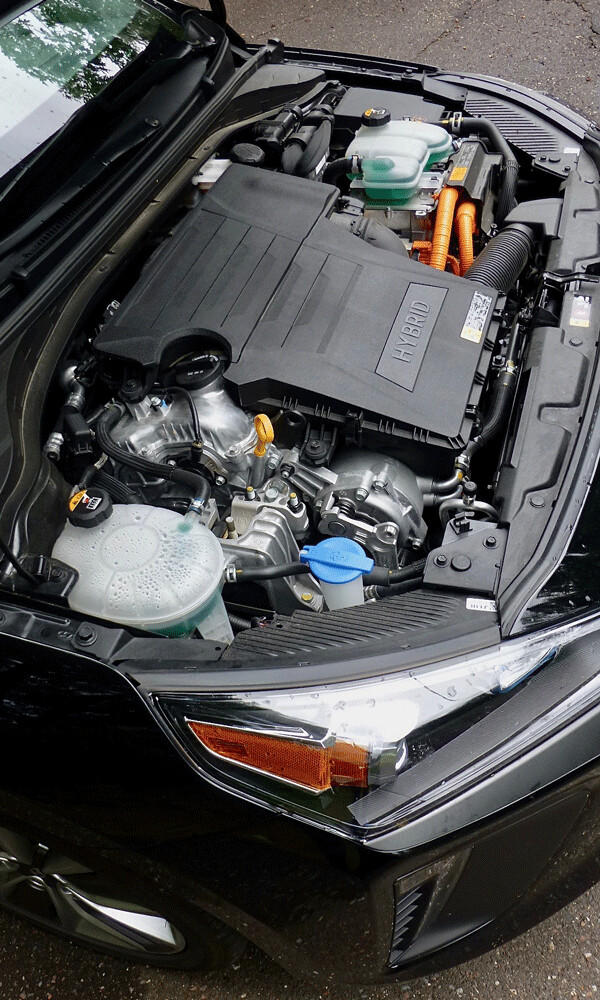

The Toyota Prius has been the standard of hybrid sales for over a decade, and superb marketing and efficiency have outdistanced competitors from Honda, and virtually all other manufacturers. The Toyota Synergy Drive is quite simple, with a nickel-metal-hydride battery pack taking in energy from the gas engine that accompanies it, allowing the Prius to run on either pure electric, or a combination of gas-engine and electric motor.
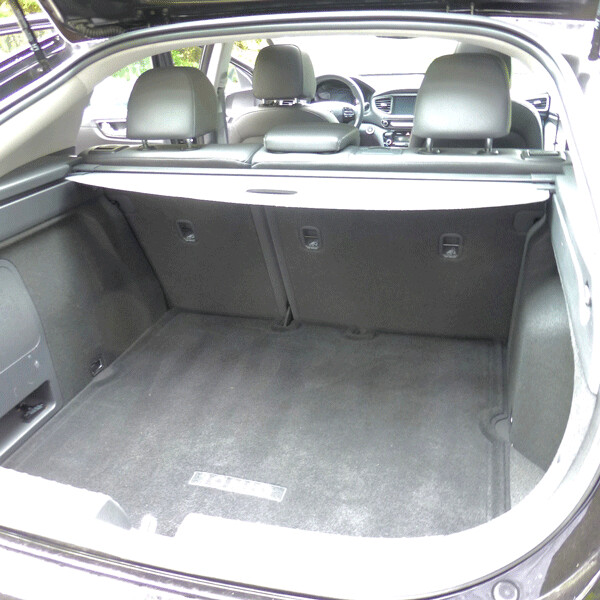
Not many drawbacks, but if any, they would be a lack of storage room in the trunk, a lack of sporty feel in the performance and handling, and such a consistency in operation that a smarter populace might wonder why the advancement in hybrid technology seems stalled a bit. Toyota has expanded the Prius line with a longer version and a shorter plug-in model.
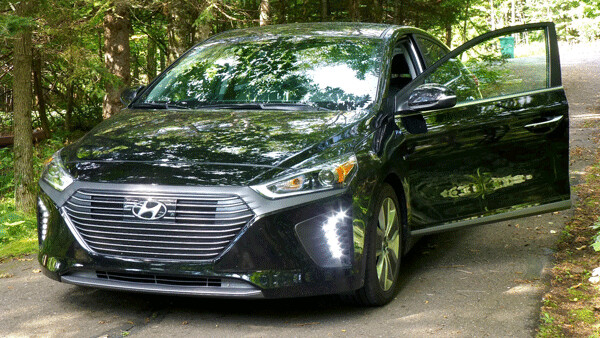
Hyundai, meanwhile, has emerged in less than a decade to challenge the top Japanese companies in style and efficiency, and while going after sportiness, Hyundai has scaled various technology challenges to battle for the top rung. The company has tried a couple of hybrid models, all the while mobilizing for the 2017 model year and the introduction of the three-pronged Ioniq strategy.
For 2017, Hyundai refreshed the styling of its successful Elantra compact into a much-improved conventional vehicle, and in the process, it designed that platform to house the Ioniq.
Hyundai also executed several impressive ideas. First, it noted that many hybrid sedans and SUVs were designed to house V6 engines, leaving considerable wasted space under the hood once a smaller 4-cylinder and hybrid system was installed, so it shortened the under-hood space. Moving the A pillars forward nearly a foot did the job, and Hyundai’s high-tech 1.6-liter engine — modified for Atkinson-cycle valve timing and hybrid connection -- fit nicely.
Next, Hyundai bypassed the proven but possibly outdated nickel-metal hydride battery pack system in favor of not only the more-advanced lithium-ion system, but an advanced specially-for-Hyundai LG lithium-ion-polymer battery system that would not only charge faster, hold a charge longer, and turn out more power, but would also fit under the back seat of the compact sedan.
While much more pragmatic than sleight-of-hand, the two moves allow for a large and deep trunk, since the battery pack is no longer a heavy, tail-wagging device that raises the trunk floor. And moving those pillars forward created enough room to expand on the legroom front and rear of the 176-inch-long sedan.
The initial appeal of the Ioniq in black was amplified by the bright chrome waterfall grille, and the neatly arranged LED daytime driving lights flanking the headlights on both sides. The contours and silhouette of the Ioniq make their own statement for style.
Using special Michelin tires helps handling considerably, and the performance is tremendously enhanced by using Hyundai’s in-house 6-speed dual-clutch transmission rather than the stodgy CVT most hybrid vehicles use.
I remain unconvinced that Hyundai engineers planned for a handling benefit that results from specially designed Michelin tires and revised suspension pieces. True, the Ionic steers and handles very well, but I think part of the whole package is that the mid-vehicle placement of the battery pack trades some of that rear weight for the kind of benefit a mid-engine car enjoys in handling. Whatever, the Ioniq Hybrid definitely has a sportier flair to its handling composure around tight turns.
The little 1.6 engine is among my favorites when turbocharged for use in other sedans and such SUVs as the Tucson, but without the turbo it loses a fair amount of its performance punch. It has direct injection, but its aim is fuel efficiency more than 0-60 sprints. The Atkinson cycle revises valve timing so the expansion stroke is longer than the compression stroke, improving thermal efficiency and enabling Hyundai engineers to use a higher 13-to-1 compression ratio.
The engine itself has 104 horsepower and 109 foot-pounds of torque, awaiting the complementary electric motor power of 43 horsepower and 125 foot-pounds of torque. Combined, the Ioniq has an adequate 139 horsepower and a potent 195 foot-pounds of torque. Zero-to-60 times under 9 seconds make the Ioniq about a second quicker than a Prius.
More important, Hyundai wanted to beat the Prius in fuel economy, and while tests show it does, my week of driving underscored it. The EPA estimates for the Ioniq Hybrid Limited show 55 city and 54 highway, because, like the Prius, the powertrain is more efficient in congested driving than sustained highway cruising. I had noticed a couple of 54-56 mpg during the week in town; on my trip, I stayed with traffic as about 75 miles per hour — not the best for a hybrid — and still got 52.1.
That, of course, leads us into a couple other distinct advantages created by the Ioniq. First, the base price for the fairly loaded test car was $27,500, and adding in the Ultimate Package with navigation, smart cruise, lane departure warning, active headlights, rear parking sensors, and an audio upgrade, boosts it to $31,460. Still under the comparable Prius models.
But the Ioniq story doesn’t end with the Hybrid. Coming along next is the plug-in Hybrid, which uses different electrical components, allows you to get a full charge with a plug, and increases fuel economy. On top of that, I’ve driven the top-end Ioniq — the pure electric. That one is amazingly quick, has a range of about 125 miles before needing a recharge, and can recover 85 percent of its charge in 20 minutes with the high-voltage converter.
After that, who knows? Maybe Hyundai will try building a new mousetrap, too.
| Tweet |


